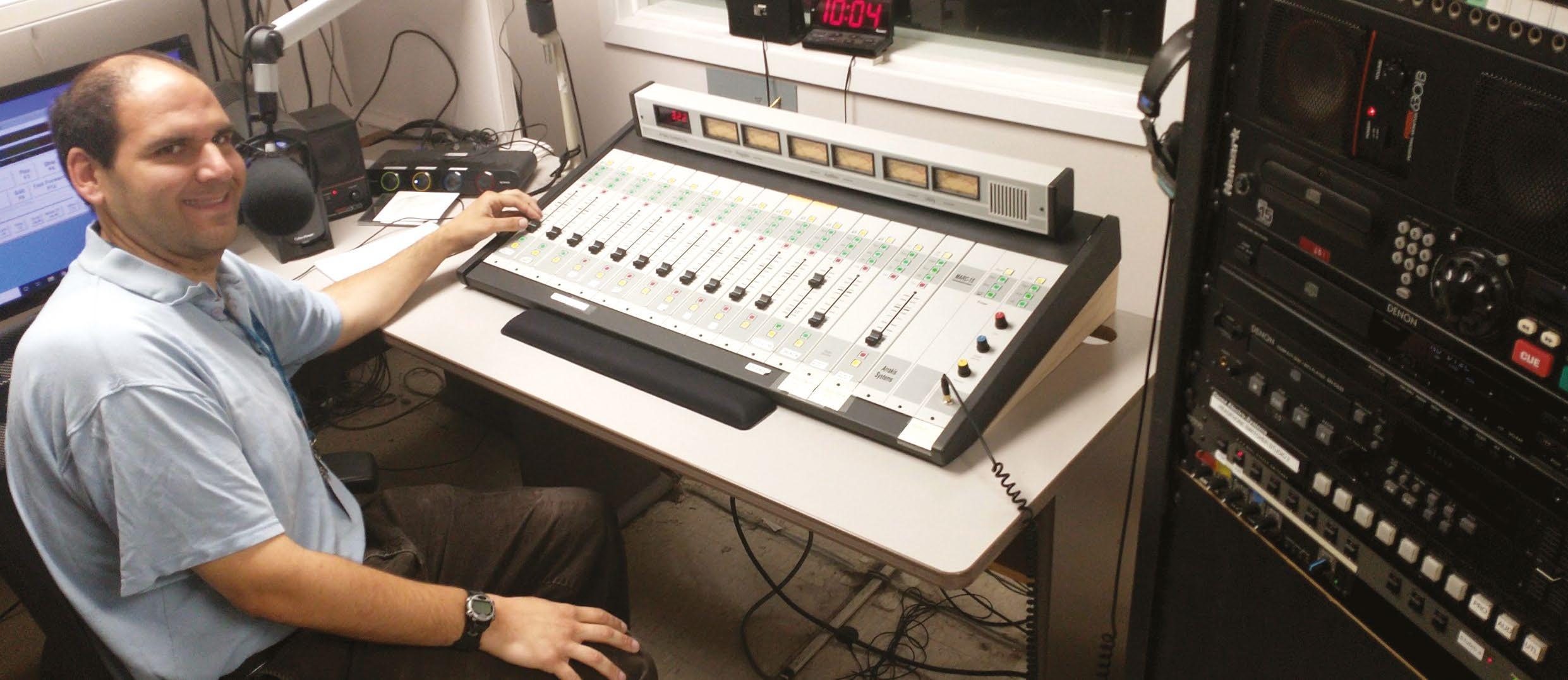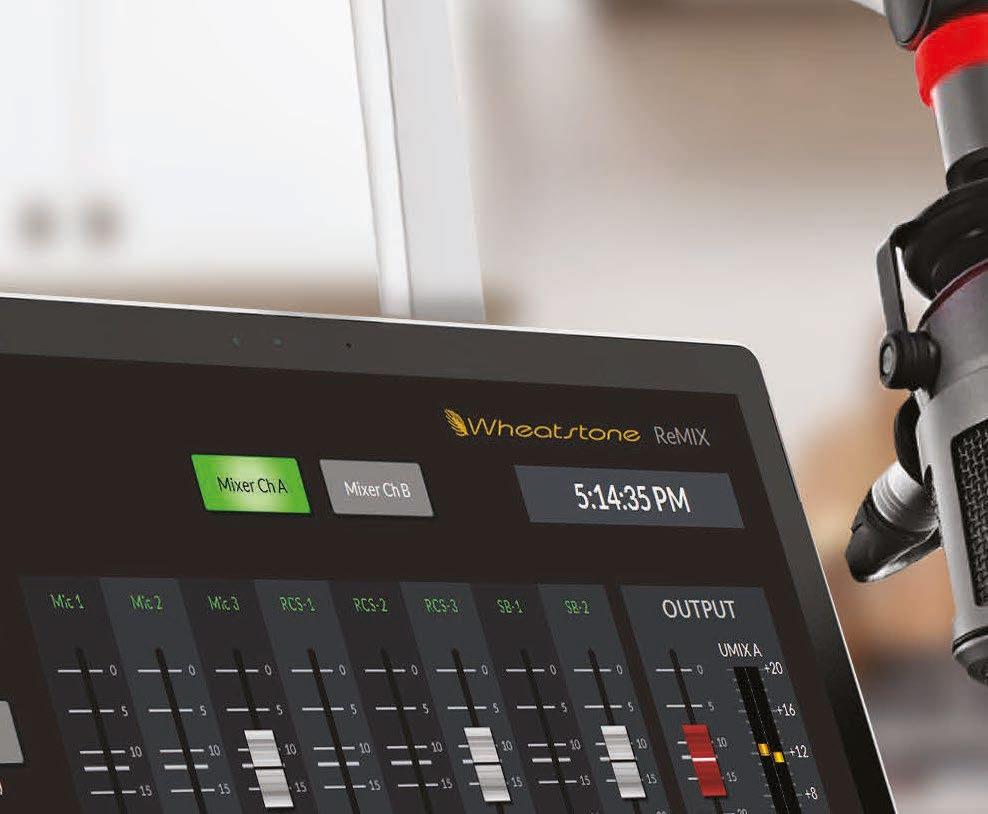
2 minute read
Reading service deploys Arrakis boards
Cincinnati volunteers find MARC-15 easy to use
More Info
www.arrakissystems.com
Above
Anthony DeGregorio with the MARC-15 Board.
R
adio Reading Services of Greater Cincinnati is using two MARC-15 consoles by Arrakis. Since 1977 Radio Reading Services has provided access to print material for 13,000 listeners living in Greater Cincinnati who are blind, visually impaired or unable to read conventional print. Volunteers read local and national newspapers, popular magazines, grocery store ads and public service announcements for its listeners to participate fully in their communities.
“Listeners access RRS through a subcarrier of WGUC,” said Manager of Volunteer Services Jennifer M. Holladay. “Each radio receiver has been tuned to receive our station because we provide our listeners access to copyright materials.”
She said RRS updated very old sound boards to the MARC-15 board.
“The choice to go with the MARC was an easy one since we have had the first one for a couple years now. Staff and volunteers access the boards and find them very efficient to use.”
Holladay likes the multiple outputs so that more than one volunteer can record at one time, and the efficiency to control playback features.
“The modular nature of the MARC was valuable for us, so that we can customize the board to fit our needs. We also appreciated that the MARC is a larger board, which gives us enough inputs to connect all of our equipment.”
The MARC-15 is a 15-channel analog modular board with three stereo outputs. Connections are by balanced RJ-45.
Available modules include microphone, stereo line, phone, studio monitor and USB. With the latter, a user can play and record in digital with a Windows PC or Mac, connected by USB cable, or record audio from the board with any third-party software.

Tech Update On-Hertz FAM: Audio Production Unplugged
The Flexible Audio Mixer “bridges the gap between the technical architects and end users,” according to On-Hertz.
It says engineers will appreciate the modularity of its software-, API-based engine for creating new signal flows, while operators will like the FAM for its familiar interface, controls and faders. Entirely software-based, it runs on off-the-shelf IT equipment, on Windows or Linux/Docker.
The operators define the number and types of channels required in their specific use case in a few clicks. The user interface and back-end audio pipeline are dynamically built by the audio engine.
Features include broadcast-grade processing capabilities such as EQs and dynamics.
The FAM can be assigned to an external hardware controller if required; it is kept in sync with the various audio channels and banks.
“With the look and feel of a physical audio mixer, other audio nodes can be added manually, preserving the exceptional modularity and versatility of the software, API-based engine.”
It combines technologies usually found in separate devices including routing, mixing, AoIP contribution, IP protocols, playout and monitoring.
Intro video: https://go.on-hertz.com/FlexibleMixer_intro









